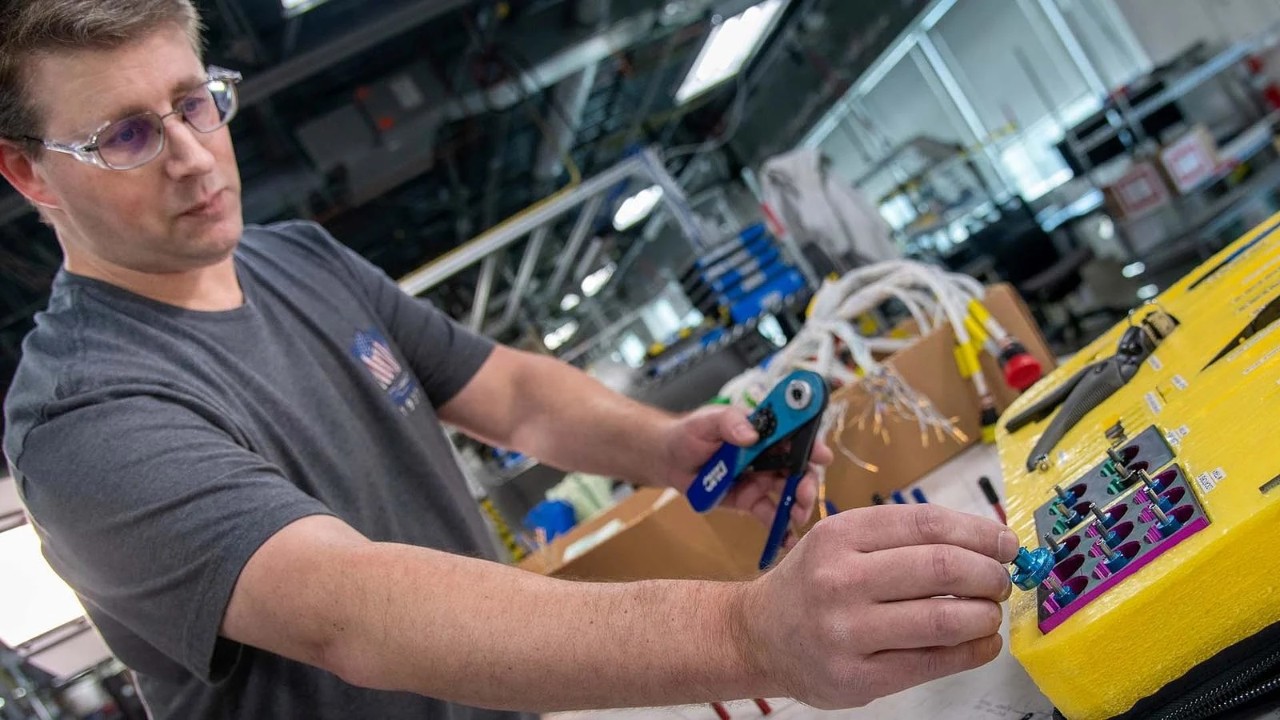
Above: Thomas Vannoy, a 767 Freighter team lead at the Electrical Systems Responsibility Center, places a locator tool into the 3D-printed tray. (Marian Lockhart photo © Boeing)
Turning tinkering into tools that tackle frustrations
Teammates develop 3D-printed manufacturing assist devices and other tools help solve common safety and quality concerns.
In her role as a manufacturing operations analyst, Hazel Fernandez often hears from her co-workers, “if only we had something like…” to help solve common frustrations, such as inefficient methods to protect parts.
- This sentiment mirrors her home life, where she has used her interest in 3D design to solve issues like her laptop overheating and organizational challenges.
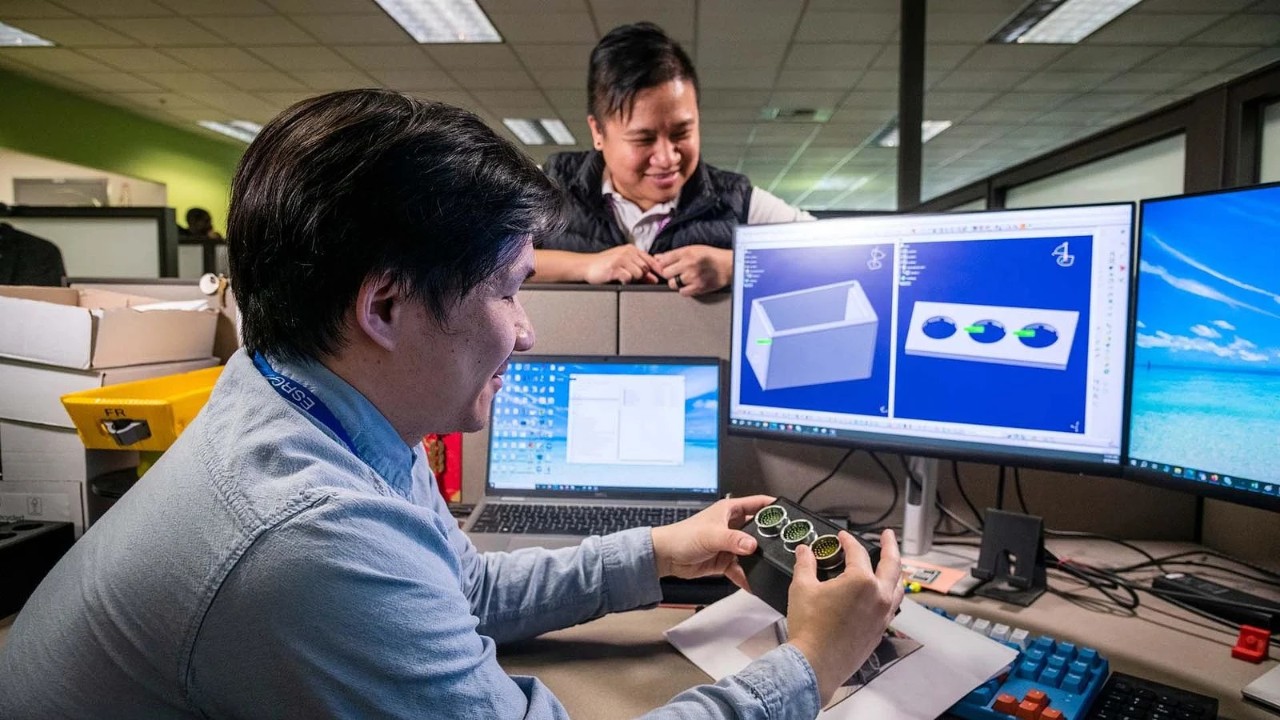
Hazel Fernandez (right) discusses a prototype of a new 3D-printed solution with Jia Huang. (Marian Lockhart photo © Boeing)
Recognizing an opportunity to help, she collaborated with Engineering to design several prototype tools that address her teammates' issues at the Electrical Systems Responsibility Center in Everett, Washington.
- “I knew I needed to speak up for my teammates,” Fernandez said. “3D printing allows us to rapidly create low-cost, high-quality tools that ensures our teams have the right tools when needed.”
Examples:
Manufacturing assist device tool for wire cutters and pliers
To address potential safety risks from sharp edges, the team created a durable band to secure these tools when not in use, replacing rubber bands that lost elasticity and created compliance risks.
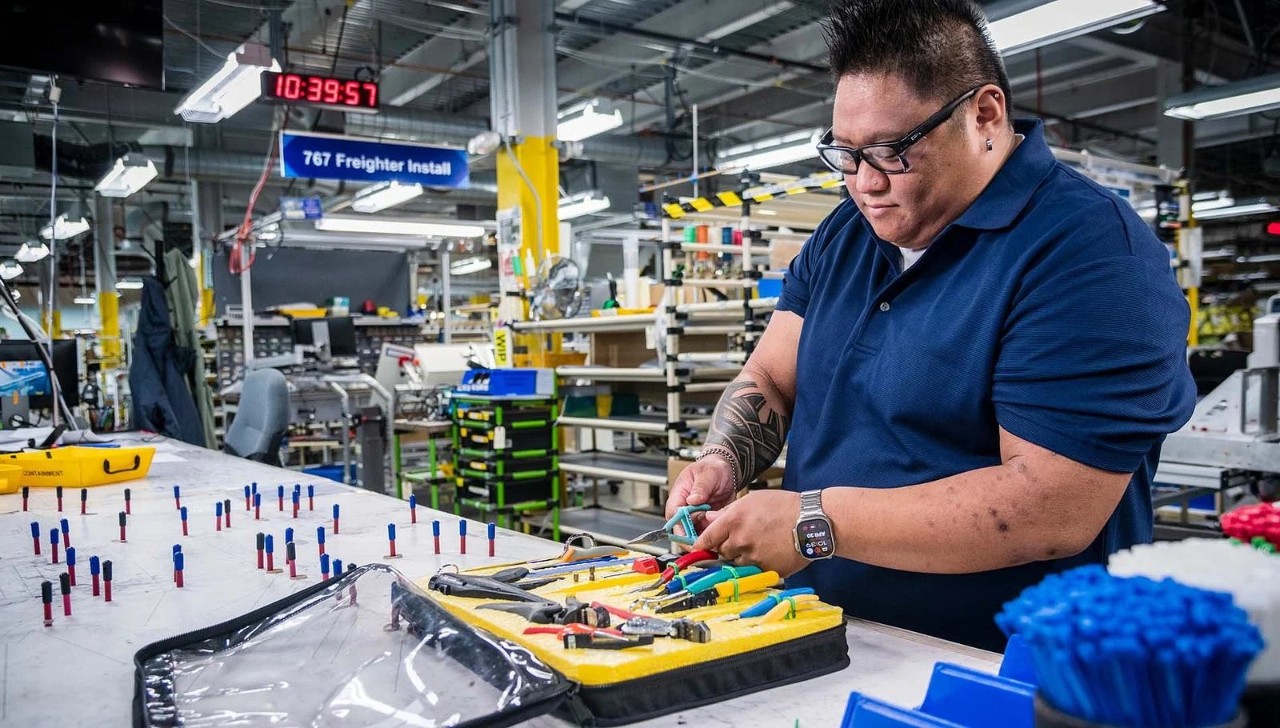
Derik Ibay applies 3D-printed bands to secure wire cutters and pliers when not in use. (Marian Lockhart photo © Boeing)
Locator tray
The team developed a tray to protect locator tools used for crimping connectors. The original tray had the potential to cause FOD by snagging on foam, which wore away the tool’s part number.
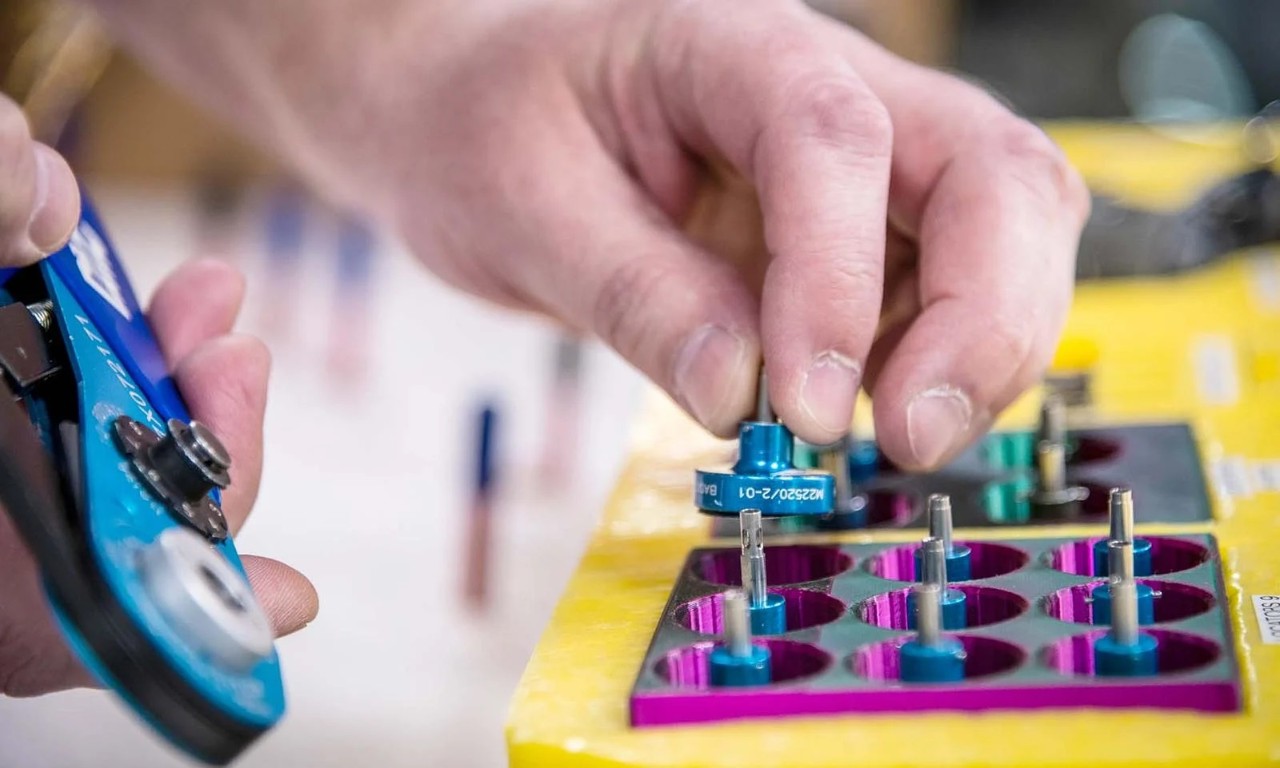
A locator tool is placed into a 3D-printed tray. (Marian Lockhart photo © Boeing)
P234 panel stand
The team developed a tray to hold the P234 panel – a power distributor in the aft of the airplane – during assembly, reducing ergonomic issues and quality defects.
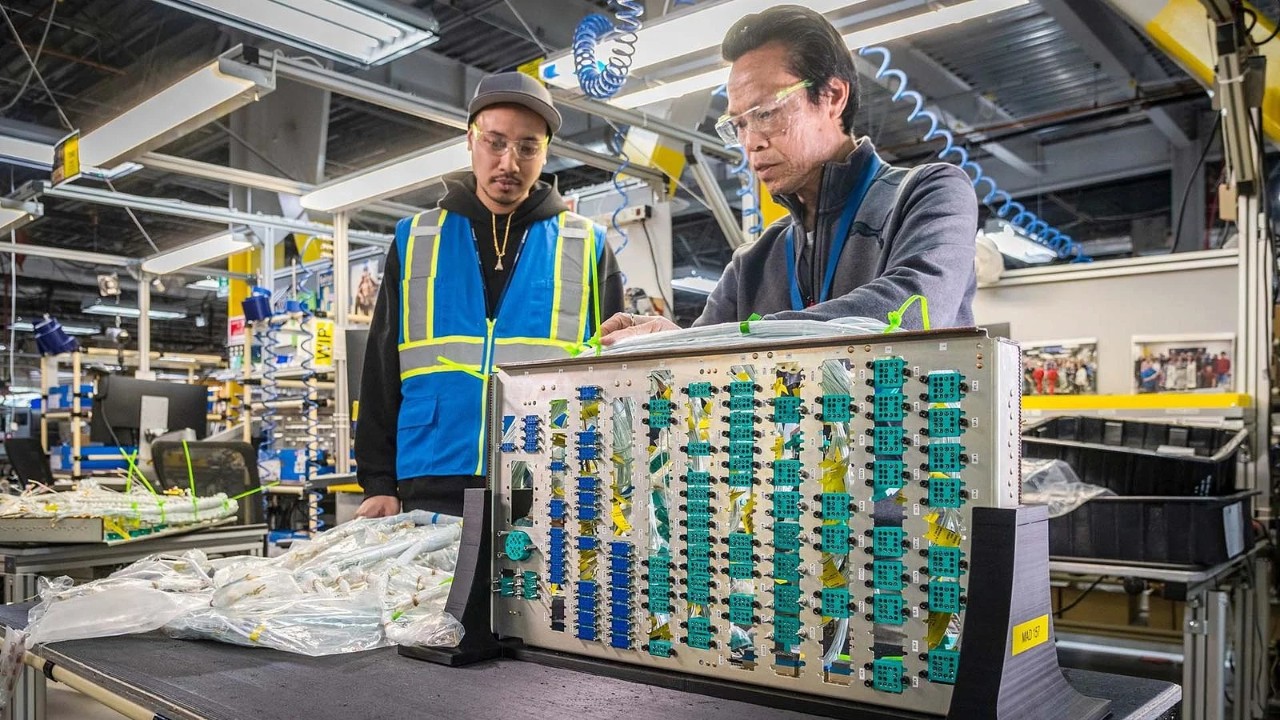
Patrick Chuoy (left) and Davoth Un test the new tray to ensure it remains stable during use. (Marian Lockhart photo © Boeing)
P6 door handle
To prevent damage during panel work, the team designed 3D-printed handle covers, replacing the time-consuming task of adding tape, which also could introduce FOD. The P6 is the main power distribution panel located in the flight deck.
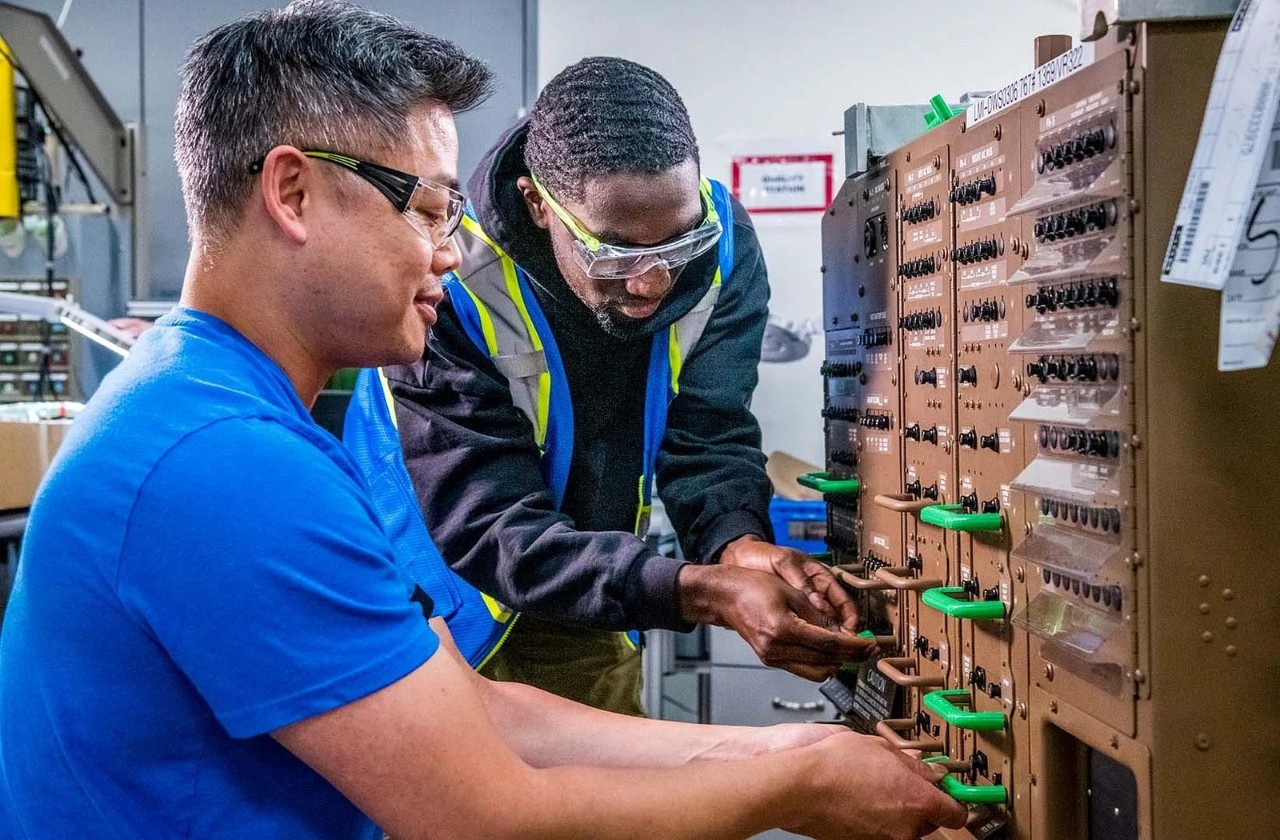
Alex Tran (left) and Curtis Rodriguez Quamina add 3D-printed handle covers to protect the handles during wire installation. (Marian Lockhart photo © Boeing)
Why it matters: Improvements like this help eliminate defects, a pillar in the company’s Safety & Quality Plan.
- “These quick wins can be replicated across our teams to help improve safety,” said Jia Huang the ESRC’s Factory Support Collaboration Center team lead who is helping shepherd this initiative. “Instead of waiting to order a part that may not work, we can create them based on direct feedback from our team.”
Designed in partnership: Each tool was developed in close collaboration with end users to ensure it met their needs and was validated by Engineering to ensure compliance.
- “As engineers, designs on paper might look perfect, but might miss the nuances in practice,” said Curtis Rodriguez Quamina, an electrical manufacturing engineer. “Therefore, if a tool is designed for a teammate, it makes sense to involve them in the process.”
Derik Ibay, an interim manager and Kaizen tech, echoed this sentiment. “Together we can create quality products in a quality workplace.”
The bottom line: “By working together, we can find permanent solutions to common problems,” said Alex Tran, a 767 Freighter team lead.